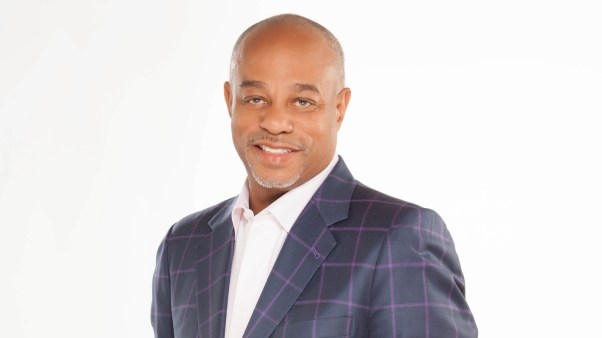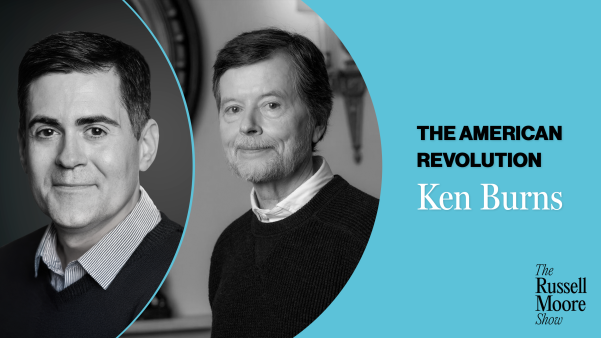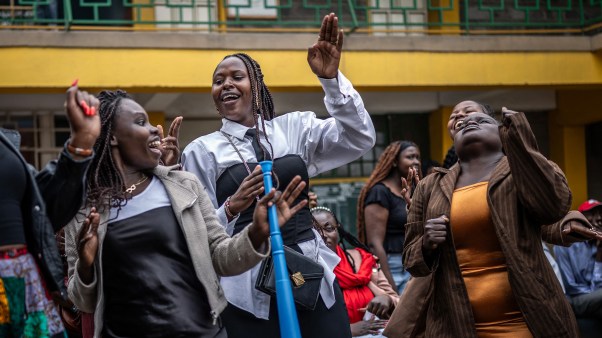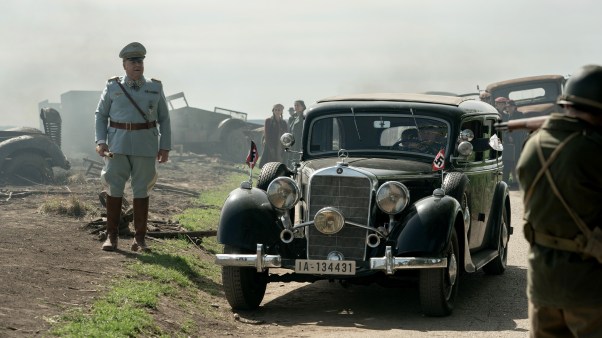Imagine yourself seated at a fashionable London dinner party in 1789.
The women are wearing hoops several feet wide, their hair dressed nearly as high and adorned with fruit or feathers. In between hips and hair, bosoms overspill. The men sport powdered hair, ruffled shirts, embroidered waistcoats, wool stockings, and buckled shoes. Politeness and manners reign around a table laden with delicate, savory dishes.
As guests wait for the after-dinner wine to arrive, a handsome but demure woman pulls a pamphlet from the folds of her dress. “Have you ever seen the inside of a slave ship?” she asks the natty gentleman seated next to her. She proceeds to spread open a print depicting the cargo hold of the Brookes slave ship. With meticulous detail, the print shows African slaves laid like sardines on the ship’s decks, each in a space so narrow, they can’t lay their arms at their sides. The print will become the most haunting image of the transatlantic slave trade—as well as a key rhetorical device used to stop it.
The woman sharing it is Hannah More.
“What William Wilberforce was among men, Hannah More was among women.” So the Christian Observer proclaimed upon More’s death in 1833. Wilberforce, the parliamentarian and politician, was the most public face of the campaign, and today is nearly synonymous with the British abolitionist movement. By contrast, as a woman who could not even vote or join abolitionist societies of the day, More was destined for obscurity. Yet historians agree she was the single most influential woman in the British abolitionist movement. One biographer said her efforts formed “one of the earliest propaganda campaigns for social reform in English history.”
Once a celebrated literary figure, More (1745–1833) was a close friend of Wilberforce. And like him, she was a tireless force for abolition and reform of British society from high to low. But unlike Wilberforce—who is still celebrated in best-selling biographies and movies—More is largely unknown outside her home region near Bristol. When I did my doctoral research on More 15 years ago, none of the professors overseeing my research had heard of her. Since then, Oxford University has published a scholarly biography of More; some of her poetry has been republished in specialized texts; and she was briefly featured in the 2006 film Amazing Grace. Now it’s worth reintroducing Hannah More, whose life and works were marked by astonishing success, as well as a few notable failures.
A Rising Star
More was born the fourth of five daughters to a family living outside the seaside city of Bristol. Under her schoolmaster father’s instruction, More was educated well beyond what was typical for a girl of any class, and her natural intelligence bloomed. After joining her sisters to teach in the school they opened, she became engaged to a landowner. But her fiancé’s thrice-repeated refusal to meet her at the altar led More to end the relationship.
As was customary in such cases, More was given an annuity in compensation. This financial gain enabled her to leave the school and become a professional writer. More quickly became a rising star among the London literati. She hobnobbed with critic and lexicographer Samuel Johnson, Shakespearean actor David Garrick, and artist Joshua Reynolds. Despite her status as an ingénue of humble origins, the elites embraced her. Her poetry was widely praised, her plays were staged at London’s Covent Garden Theatre, and her figure was included in a painting celebrating England’s most cultured women (The Nine Living Muses). Her fastidious Sabbath-keeping gave her a reputation among her literary friends as “a Sunday woman.”
As a woman who could not vote or join abolitionist societies of the day, More was destined for obscurity. Yet historians agree she was the single most influential woman in the British abolitionist movement.
The luster of urban life did not last long, though. More was a lifelong member of the Church of England and, unlike many of her fellow churchgoers, her faith was heartfelt. She was naturally tuned to the burgeoning evangelical movement sparked by John and Charles Wesley and augmented by George Whitefield. In 1780, a friend gave More a copy of Cardiphonia, a collection of letters penned pseudonymously by ex-slave trader and “Amazing Grace” hymnist John Newton. “I like it prodigiously,” she wrote to a close friend. “It is full of vital, experimental religion” with “nothing in it but rational and consistent piety.” In 1787, More traveled to Newton’s London church to hear him preach. After the service, they spoke for about an hour, beginning a long friendship.
That same year, More met Wilberforce. She had already worked with other abolitionists, and when the group learned of Wilberforce’s Christian conversion—and his sympathy for their cause—they invited him into their circle. More and Wilberforce’s friendship was as instantaneous and electric as it was platonic. It helped Wilberforce achieve the famous mission he recorded in his journal on Sunday, October 28, 1787: “God Almighty has set before me two great objects, the suppression of the slave trade and the reformation of manners.”
Trading Poems for Pamphlets
English citizens were largely shielded from the horrors of the slave trade. With most of the trade taking place offshore, the abolitionists had to gather voluminous evidence to convince their peers of the unseen truth. The Brookes diagram was among the most persuasive pieces they could marshal. By law, the ship was permitted to carry 454 slaves, each squeezed into a 6 feet by 1 foot and 2 inches space. Yet the ship often packed in more than 600 slaves. The abolitionists printed a drawing of the ship’s innards. By 1788, it was widely reproduced in broadsheets, pamphlets, and books. At dinner parties, More no longer brought her poetry. Instead, she brought pamphlets.
Dinner wasn’t the only meal More was willing to disturb. Even the near-sacred teatime was marred by the trade. More was one of the first and most effective citizens to boycott West Indian sugar, produced by enslaved Africans brought to islands that lie between Florida and South America. For many years, she served only East Indian sugar that had “no blood on it”—an early precursor to today’s campaigns against blood diamonds and other conflict minerals.
But More’s strongest weapon in the fight against slavery was her pen. The influence gleaned from her time among the literati proved to be of practical use. In 1788, she wrote a poem published to coincide with a resolution Wilberforce was bringing concerning the number of slaves that could be put on ships. Nearly 300 lines long, Slavery received praise far and wide, reportedly inspiring missionaries of the next century, such as David Livingston, to take the gospel to Africa.
More wrote numerous other works, including abolitionist tracts for lower-class readers. In her many letters to friends and family, she recounted heart-rending accounts of the trade she had heard from eyewitnesses at dinners, social events, and abolitionist meetings. Significantly, she wrote to friends who supported the trade, aiming to enlighten, move, or simply shame them into a sense of mere humanity. The letters show More could charm even as she rebuked.
For example, in one letter More recalled a lively dinner conversation with a lord. The two bantered about a range of topics, including the modern state of writing and oratory: “I defended my opinion by many passages from Shakespeare,” More wrote. “We then resumed our old quarrel about the slave trade: he loves slavery upon principle. I asked him how he could vindicate such an enormity. He owned it was because Plutarch justified it.” The lord’s proslavery views were “so absurd,” More wrote, that “to be grave” while listening to them “exceeds all power of face.” Despite their deep disagreement on the slave question, More remained friends with the lord for many years, during which she continued to try to sway him to the cause.
In 1807, 20 years after Wilberforce led the parliamentary campaign against it, the slave trade was abolished. But the remaining slaves weren’t freed until 1833, just weeks before More died. In the ensuing years, More was hardly idle. With support from Wilberforce, Newton, and her evangelical friends known as the Clapham Sect, she spearheaded numerous reform efforts. In rural areas outside Bristol, she opened Sunday schools where the children of poor laborers, then the laborers themselves, learned reading, arithmetic, Bible lessons, and employable skills. Having created a newly literate class among the poor, More then began publishing cheap tracts filled with stories and songs imparting moral lessons designed to guide the oppressed poor.
Buoyed by the success of the tracts, More wrote a novel for the middle class, a thinly disguised Christian lesson on courtship, marriage, and childrearing. It was a bestseller. She continued into old age to write antirevolutionary treatises and works of spiritual devotion alike. With her Clapham colleagues, she also initiated Britain’s first child-labor laws and founded the Society for the Prevention of Cruelty to Animals. If Wilberforce was the voice of their movement, Hannah More was its heart and hands.
So why is she mostly unheard of today?
An Intellectual Storm
When she died at age 88, More was a celebrity, known throughout the British Empire, America, and beyond. She lived her last years as a patron saint of British and US evangelicals, countless numbers of whom visited her rural estate outside Bristol. They came hoping to learn at the feet of the woman whose critics had nicknamed her “the Bishop in petticoats.”
Yet an article published a century later showed how much her reputation and legacy had declined. In 1925, the novelist E. M. Forster (whose great-aunt, Marianne Thornton, was More’s goddaughter) published an article in The New Republic. The title of the article—simply “Mrs. Hannah More”—suggests that, nearly a century after her death, More needed no introduction. However, the kindest thing Forster said about More was that “her work was good, if education is good.” He continued, sneering, “She taught the poor to read and wash themselves, observe Sunday, and honor the king, and before that no one had taught them anything.” Forster, a fellow of King’s College at Cambridge, ungallantly summed up the character of More and her four sisters as “lively, hospitable, jabbering, and suppressing the slave trade and elevating the poor.”
Clearly more than time had passed since 1833. An era had passed, too. Some historians have called More the “First Victorian” for her role in ushering in the values of that age. But modernists such as Forster defined themselves by rejecting Victorian traditions: its religion, its institutions, its God, and the people who proclaimed that God. The modernists who descended from 18th-century evangelicalism—among them Virginia Woolf, George Eliot, R. C. Trevelyan, and Forster—saw the moral strictness of their forebears as an affront to their licentious impulses. They scoffed at the accomplishments of the evangelicals. More, the most prominent woman in the movement, was a particular target of their derision.
While More and her fellow reformers had been effecting moral and religious transformation at home and abroad, an intellectual storm had been brewing. And with their eyes on explicitly spiritual and social matters, they scarcely noticed the sands shifting under their feet. In 1798, political economist Thomas Malthus, for example, began promoting some of the earliest ideas about population control, which would inform Charles Darwin’s writings on natural selection. In 1811, a young student named Percy Bysshe Shelley published a pamphlet titled The Necessity of Atheism. Though he would be expelled from Oxford for this, Shelley’s ideas took hold after he became a leading Romantic poet and philosopher.
Around the turn of the century, anarchist William Godwin advocated utilitarianism, the belief that institutions and behaviors should be tested by reason and whether or not they achieve “the greatest good for the greatest number” rather than by morality. Like More, Godwin’s wife, the “mother of feminism” Mary Wollstonecraft, wrote about the education of women. Unlike More, Wollstonecraft was fueled by the revolutionary principles undergirding the French Revolution, advancing newfangled notions about women’s rights.
More and her peers engaged little if at all with these ideas. More acknowledged Wollstonecraft’s manifesto, A Vindication of the Rights of Woman, only to state that she refused to read it. Some years earlier, after reciting a passage from Henry Fielding’s novel A History of Tom Jones and being chided by Johnson for reading so “vicious” a work, More repented of it. She repented, too, of having written for the stage.
More and her co-laborers brought widespread reform by appealing to religious, moral, and emotional sensibilities. But without an intellectual undergirding, the slide from morality to moralism proved an easy one. At the same time their courageous efforts were waged at home and throughout the empire, anti-Christian intellectual forces were gaining strength. The Enlightenment ideas that birthed the rise of the individual—and with it, the emphasis on personal faith over traditional religion—bred skepticism and atheism, too. The intellectual arena—the arena that the Christians of More’s time overlooked—proved to wield the greatest influence on Western culture. In fact, we are still living under the power of secularism today.
Middle-Class Matriarch
Of course, human and kingdom relevance are not the same. We live in the world that More, Wilberforce, Newton, and others marked deeply with Christian compassion and justice. The fact remains: Their accomplishments rank among some of the greatest achieved by the fewest people in any time in history. More’s story in particular is a remarkable example of the way Providence and individual pluck can, in fact, change the world, despite more recent, sober assessments of Christian cultural engagement.
More's, Wilberforce's, and Newton's accomplishments rank among some of the greatest achieved by the fewest people in any time in history.
More and fellow evangelicals have been attributed with the birth of “middle-class morality”—a mix of conservative religious and economic values that is said to breed materialism, hypocrisy, superficiality, and philistinism. But the charge is not quite accurate. The morality More and others cultivated—duty, piety, thrift, and hard work—made the middle class. It did so by freeing the slaves, lifting many of the nation’s poor out of the stagnant pool of subsistence living, and elevating the idea of the potential of each individual.
More herself lived a bourgeois life, but did so in a time lacking the vocabulary to name it. The term “middle class” was minted in the year of her birth, 1745, but would not enter common parlance until well into the 1800s. It shouldn’t surprise us that More exhibited anxieties typical of the nouveau riche, along with those that come from the disorientation of an unnamable experience. She was ashamed of her parents’ obscure origins, uneasy in the company of social superiors, and prone to fawning over those she wanted to impress.
Yet it was precisely this middle position that allowed her to reach all strata of society as few others could or did. That she could reach both high and low classes gave More unprecedented citizenship in what 19th-century prime minister Benjamin Disraeli later called England’s “two nations”: the rich and the poor.
More was not a tower but a bridge over the deep chasm between the two classes. Her cheap tracts for the poor—full of moral ballads, songs, and tales, as well as helpful household hints—fostered literacy within the laboring class at a time when few cared whether the poor could eat, let alone read. Her best-selling novel, Coelebs in Search of a Wife, was written to appeal to the emerging middle class. It helped elevate the reputation of a still disdained literary form, thus paving the way for celebrated novelists like Jane Austen and Charles Dickens. And the upper class—including royalty—remained avid readers of More’s diverse body of works. Queen Charlotte was so convicted by reading one of More’s volumes on manners that she forswore breaking the Sabbath by releasing her hairdresser from work on Sundays.
In hindsight, More and friends seem to have undervalued the world of ideas. Yet the modernists who came after them erred in the opposite direction. The early evangelicals’ general failure to engage the mind makes sense when lifting the slaves and the poor out of oppression and the fashionable out of dissipation are viewed, rightly, as more pressing needs in the triage of cultural redemption.
More’s reputation, like her literary fame, was but a vapor. But the souls of the Africans her efforts helped to free, the poor whose lives were improved in her schools, and the elite who were moved by her example are eternal.
Karen Swallow Prior is professor of English at Liberty University and the author most recently of Fierce Convictions: The Extraordinary Life of Hannah More—Poet, Reformer, Abolitionist (Thomas Nelson). She writes regularly for Her.meneutics.










